Books
Books
published in 2018

Where the Bird Disappeared
This lyrical novel, set in the surroundings of the Palestinian village of Zakariyya, weaves a narrative rich in sensory detail yet troubled by the porousness of memory. It tells the story of the relationship between two figures of deep mythical resonance in the region, Yahya and Zakariyya, figures who live in the present but bear the names—and many traits—of two saints. Ranging from today into back to pre-1948 Palestine, the book presents both a compelling portrait of a contemporary village and a sacred geography that lies beyond and beneath the present state of the world. Sensual, rich in allusion, yet at the same time focused on the struggles of today, Where the Bird Disappeared is a powerful novel of both connection and dispossession.
Ghassan Zaqtan (Arabic غسان زقطان) is a Palestinian poet, author of ten collections of poetry. He is also a novelist, editor. He was born in Beit Jala, near Bethlehem, and has lived in Jordan, Beirut, Damascus, and Tunis.

Reading Like a Computer
The contents of Reading Like a Computer. A Sematic Guide to Facebook's Content Moderation Policies are from leaked PowerPoint slides used to train Facebook content moderators. The contents have not been embellished or editorialized. By organizing and graphically presenting the subtle discrepancies between what Facebook allows and doesn’t allow in a post, the book highlights the contradictions and challenging logic of Facebook's community standards.
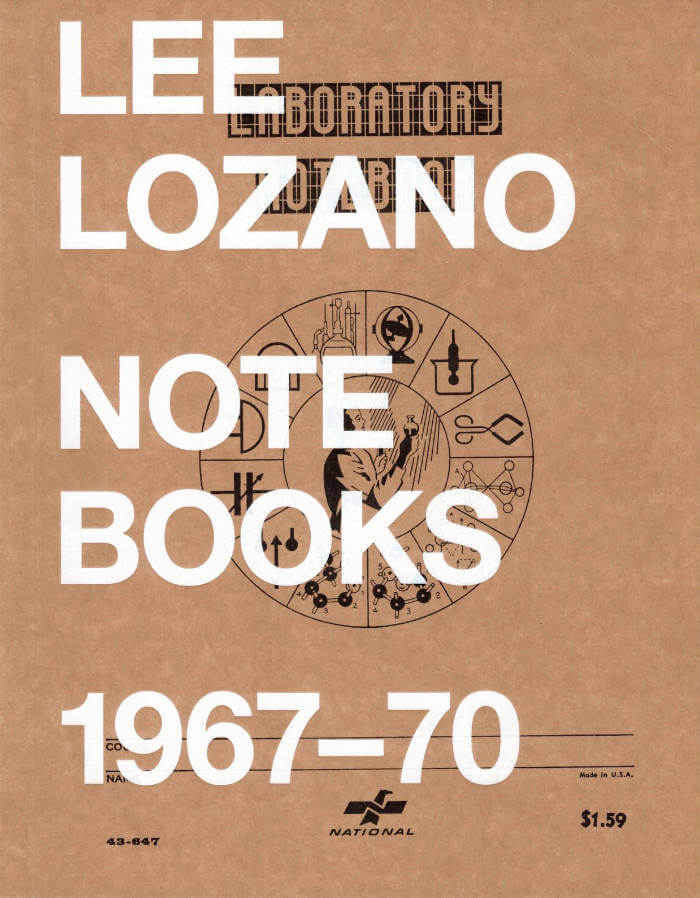
Notebooks 1967-70
This publication is a compilation of Lee Lozano’s notebooks from 1967 to 1970. The three notebooks included here contain her seminal “Language Pieces” and drawings for her paintings, including 12 studies for her 11-panel masterpiece, “Wave Series.”
Lee Lozano (1930-1999) was an enigmatic artist making a diverse body of drawings, paintings, and conceptual works. While prolific, her production was limited to her time in New York from the early 1960s to the early 1970s. She was very actively engaged with other artists in New York until she decided to leave the art world in 1972. Until recently, much of her work has been difficult for the public to access. From the time of her boycott of the art world until her death, Lozano was an artist working conceptually even though she did not participate actively in the commercial art world for the last three decades of her life.
The pages of the notebooks contain notes and sketches related to her abstract paintings and also contain her texts, which were known as “Language Pieces.” The artist’s work in the books reveal her desire to live and create art within a structured system. Lozano considered the individual pages of her notebooks to be drawings, and they were sometimes separated and exhibited. Twenty-five years ago, the notebooks were photocopied and it is that record which serves as the basis for this book.
Notebooks 1967-70 was first published by Primary Information in 2010. This is the second printing.

The Alphabet Book
In 1971, Michael Morris and Vincent Tarsov—founders of the Vancouver-based artist network Image Bank—invited Eric Metcalfe, Gary Lee Nova, Glenn Lewis and Paul Oberst to create their own, unique alphabet. NowForty years later, with the permission of the participating artists and the help of Image Bank, these historic silk-screened alphabets have finally been published together. The Alphabet Book is designed by Marc Hollenstein, who was inspired to reinitiate the alphabet publication project after having a conversation with Glenn Lewis during the opening of Lewis’ retrospective exhibition at Kunstverein back in 2014.
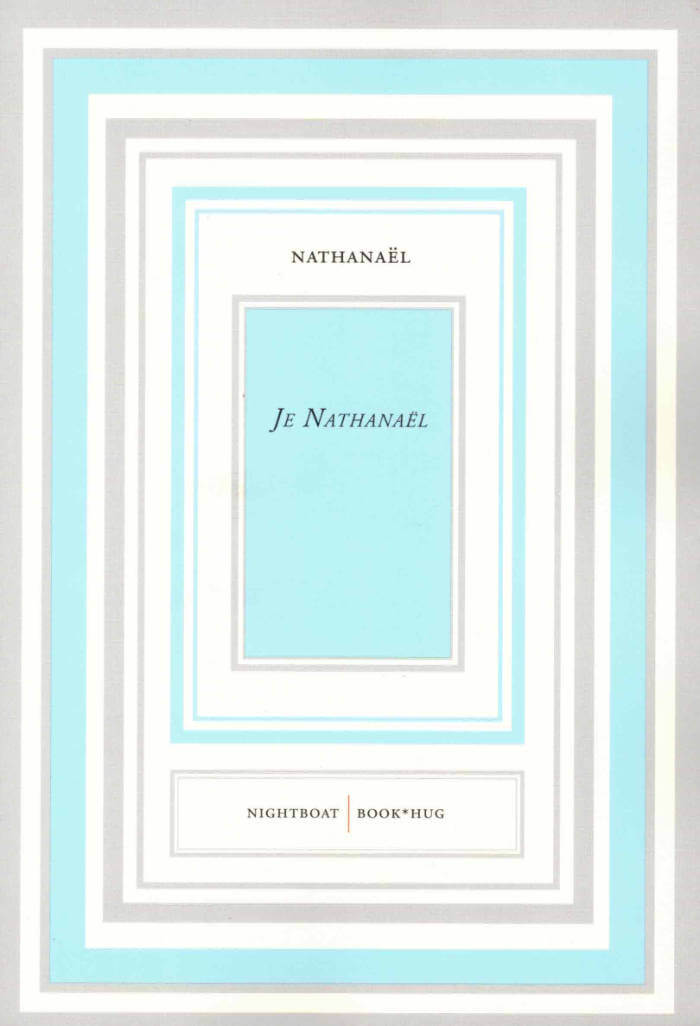
Je Nathanael
In Je Nathanaël, first published in 2006, Nathanaël explores ways in which language constrains the body, shackles it to gender, and proposes instead a different way of reading, where words are hermaphroditic and transform desire in turn. Suggesting that one body conceals another, it lends an ear to this other body and delights in the anxiety it provokes. With parts written in French, other parts in English, this is truly a hybrid text, throwing itself into question as it acts upon itself in translation. It is both originator and recipient of its own echo. In this regard it does not, cannot exist, pulling insistently away from itself in an attempt to draw attention to the very things it seeks to conceal. In this way, Je Nathanaël is a book of paradox, negating itself as it comes into being.

On the Table 6 – The Meal – A Conversation with Gilbert & George
Gilbert & George, Charlotte Birnbaum
Charlotte Birnbaum meets with Gilbert & George to discuss The Meal—a culinary performance organized in 1969 by the British duo, with David Hockney as the guest of honor. Also included here are photos and memorabilia from the singular event (the sixth publication in the On the Table series, that explore the encounter between food and art).
Gilbert & George never cook and always eat out. Back in 1969, however, the artist duo hosted The Meal, an elaborate dinner party that included thirteen guests, Princess Margaret's butler, a chef who prepared a meal from a Victorian cookery manual, and the guest of honor, artist David Hockney. While the art world of the time was largely characterized by Pop art, Minimalism, and Conceptual art, Gilbert & George developed an entirely unique philosophy and combined their daily lives with their artistic vision; in short, their art and life are one! Charlotte Birnbaum took a trip to London's East End to visit the immaculately dressed pair to discuss The Meal and other curious projects from their fifty-year collaboration. Also included here are photos and memorabilia from the singular event.
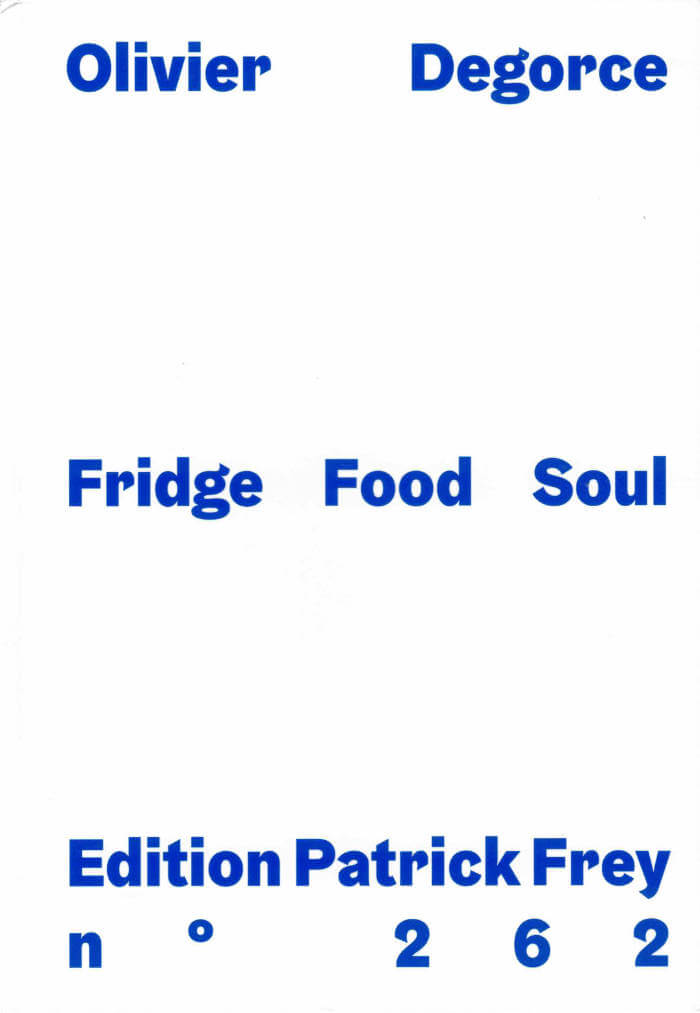
Fridge Food Soul
Photographer Olivier Degorce brings together a series of fridge photographs shot from 1993 to 2017: Beyond the obsessive nature of the project lies the sheer diversity of individual eating habits in the form of contemporary still lifes.
The photographs presented in Fridge Food Soul were shot from 1993 to 2017, for the most part on the spur of the moment, using all sorts of analog and digital devices ranging from the most sophisticated to the most rudimentary cameras. In most cases he took only one shot of each fridge. The serial collection of these snapshots in a single book testifies to the systematic, even obsessive, nature of this project.
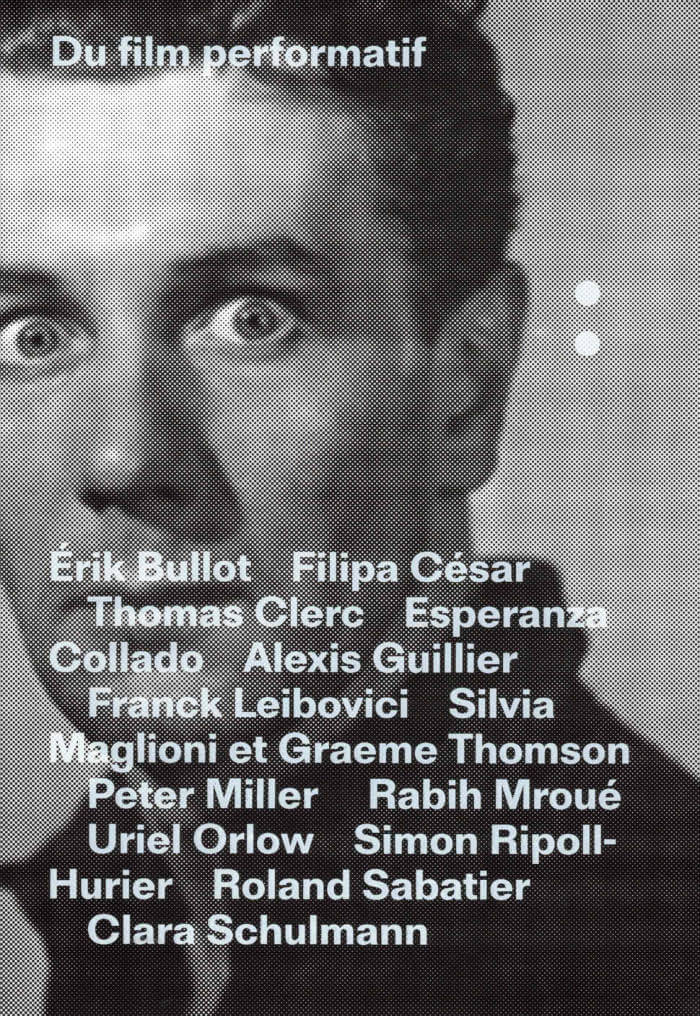
Du film performatif
Mapping the practices of performative cinema today.
Texts by Érik Bullot, Filipa César, Esperanza Collado, Thomas Clerc, Alexis Guillier, Franck Leibovici, Silvia Maglioni & Graeme Thomson, Peter Miller, Rabih Mroué, Uriel Orlow, Simon Ripoll-Hurier, Roland Sabatier, Clara Schulmann.

Reality (Dark) Fragments (Light)
This monograph covers more than fifty years of creation by Art & Language, whose artists are at the origin of conceptual art. Through unpublished texts by Matthew Jesse Jackson and Art & Language, a transcript of their opera libretto Victorine, and an interview with the artist collective, this publication questions their journey, and more broadly, the relationship between contemporary art and conceptual art.
The permanent collection of the Château de Montsoreau – Museum of Contemporary Art has grown to include 800 works from Art & Language. To celebrate this event, the museum produced a major exhibition and a publication titled Reality (Dark) Fragments (Light). The monograph and exhibition look back at 50 years of creation by these critical, provocative, subversive, punk art collective. They question the main issues involved in Art & Language's work: conversation as an artwork, description, transdiciplinarity, crisis in the relationship between the artist, the museum and the art gallery.
Edited by Marie-Caroline Chaudruc.
Foreword by Marie-Caroline Chaudruc.
Text by Matthew Jesse Jackson, interview with Art & Language by Victorine Meurent.
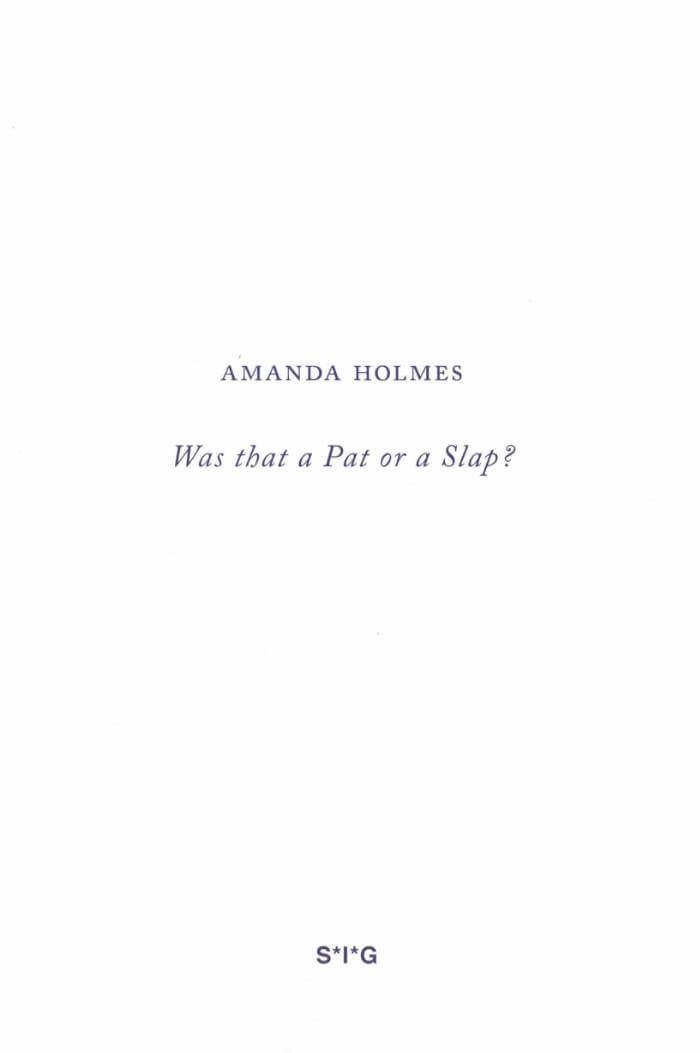
Was that a Pat or a Slap?
Lacan's Critique of Understanding and the Problem of Meaning.


Chi Ban Lon: Queer & Sexuality Lexicon
Chỉ Bàn Lộn is a collection of Vietnamese queer and sexuality slang collected by artist ĐINH Thị Nhung and translated into English while working with Tường Vy and other participants of the Bàn Lộn-Vagina Talks project.
Born in Saigon in the mid-1980s, Tường Vy is a transgender queer who has been subject to a great deal of harassment, especially by the police during gatherings around public gardens. She and her friends’ experiences have led to a rich vocabulary to discuss sensitive topics related to their ‘professions’, preferences, and sex life. The main part of the Chỉ Bàn Lộn lexicon, ‘Saigonese pede 8x’, is related to their creation of linguistic safe spaces, and the rest of the publication outlines different ways to indicate parts of the body and how to talk about sex in the contemporary Vietnamese context.
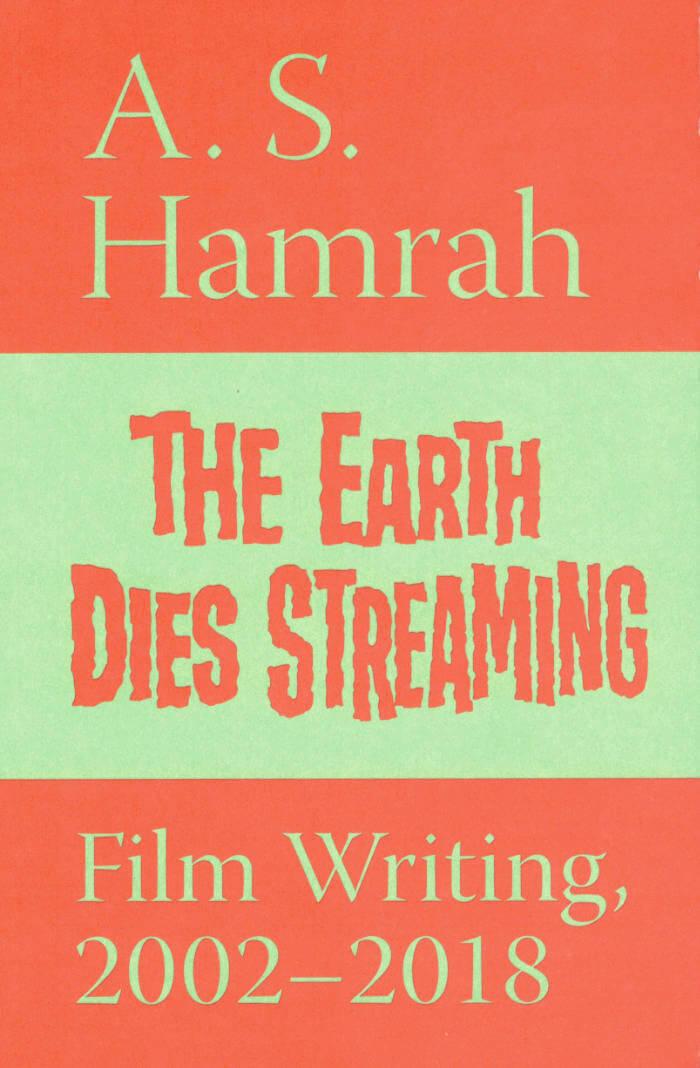
The Earth Dies Streaming: Film Writing, 2002-2018
The Earth Dies Streaming collects the best of A. S. Hamrah's film writing for n+1, The Baffler, Bookforum, Harper's, and other publications. Acerbic, insightful, hilarious, and damning, Hamrah's aphoristic capsule reviews and lucid career retrospectives of filmmakers and critics have taken up the mantle of serious American film criticism pioneered by James Agee, Robert Warshow, and Pauline Kael and carried it into the 21st century.
Taken together, these reviews and essays represent some of the best film criticism in the English language. The Earth Dies Streaming showcases a remarkable critical intelligence while offering a cultural history of the cinema of our times.
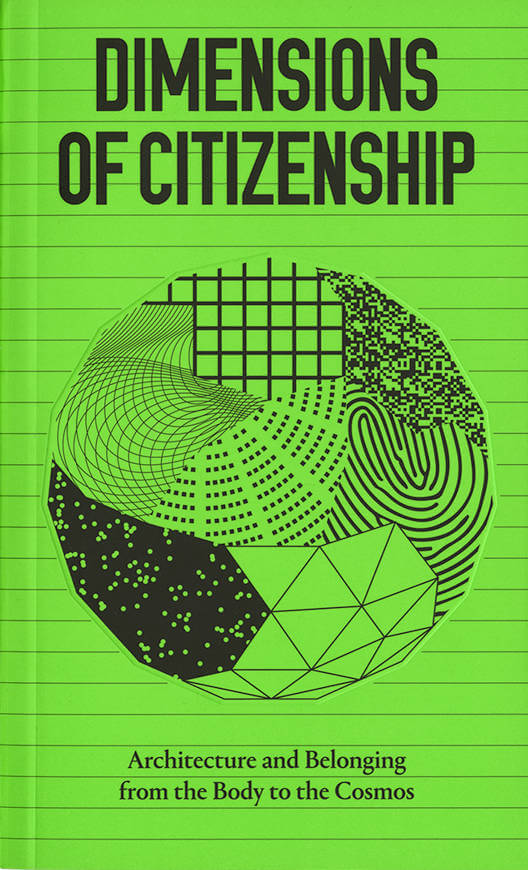
Dimensions of Citizenship
US Pavilion, Venice Architecture Biennale 2018
Globalization, technology, and politics have altered the definition and expectations of citizenship and the right to place. Dimensions of Citizenship documents contributions from the seven firms selected to represent the United States in the 2018 Venice Architecture Biennale. This paperback volume profiles and illustrates each of the US Pavilion contributions and contextualizes them in terms of scale.
Drawing inspiration from the Eames’ Power of Ten, Dimensions of Citizenship will provide a view of belonging across seven stages starting with the individual (Citizen), then the collective (Civic, Region, Nation), and expanding to include all phases of contemporary society, real and projected (Globe, Network, Cosmos). Additional essays—by Ingrid Burrington, Ana María León, and Nicholas de Monchaux, among others—will offer essential and enquiring responses to these themes.
From “social to speculative; technical to theoretical,” the participating teams lead intellectual and architectural practices that not only situate the US as a leading center of critical research at the heart of the debate on citizenship, social conscience, and a just society, but also as a place at the intersection of political action, public policy, and changing notions of nationality.
Participants in the US Pavilion at the 2018 Venice Architecture Biennale are: Amanda Williams & Andres L. Hernandez with Shani Crowe (Chicago, IL); Design Earth (Cambridge, MA); Diller Scofidio + Renfro, Laura Kurgan, Robert Gerard Pietrusko with Columbia Center for Spatial Research (New York, NY); Estudio Teddy Cruz + Fonna Forman (San Diego, CA); Keller Easterling (New Haven, CT); SCAPE (New York, NY); and Studio Gang (Chicago, IL). The exhibition is curated by Niall Atkinson, Ann Lui, and Mimi Zeiger; and commissioned by the School of the Art Institute Chicago and University of Chicago.
Edited by Nick Axel, Nikolaus Hirsch, Ann Lui, and Mimi Zeiger

Bio
Bio documents a 365-day project by US-based artist, poet and theorist Maryam Monalisa Gharavi, during which she updated the biography section of her Twitter account, the only untraceable and non-archived part of the program's superstructure, raising questions of power, self-deletion and visibility in the internet era.

Queer Experimental Literature: The Affective Politics of Bad Reading
This volume argues that postwar writers queer the affective relations of reading through experiments with literary form. Tyler Bradway conceptualizes "bad reading" as an affective politics that stimulates queer relations of erotic and political belonging in the event of reading. These incipiently social relations press back against legal, economic, and discursive forces that reduce queerness into a mode of individuality.
Each chapter traces the affective politics of bad reading against moments when queer relationality is prohibited, obstructed, or destroyed—from the pre-Stonewall literary obscenity debates, through the AIDS crisis, to the emergence of neoliberal homonormativity and the gentrification of the queer avant-garde. Bradway contests the common narrative that experimental writing is too formalist to engender a mode of social imagination. Instead, he illuminates how queer experimental literature uses form to redraw the affective and social relations that structure the heteronormative public sphere.
Through close readings informed by affect theory, Queer Experimental Literature offers new perspectives on writers such as William S. Burroughs, Samuel R. Delany, Kathy Acker, Jeanette Winterson, Eve Kosofsky Sedgwick, Alison Bechdel, and Chuck Palahniuk.
Queer Experimental Literature ultimately reveals that the recent turn to affective reading in literary studies is underwritten by a para-academic history of bad reading that offers new idioms for understanding the affective agencies of queer aesthetics.
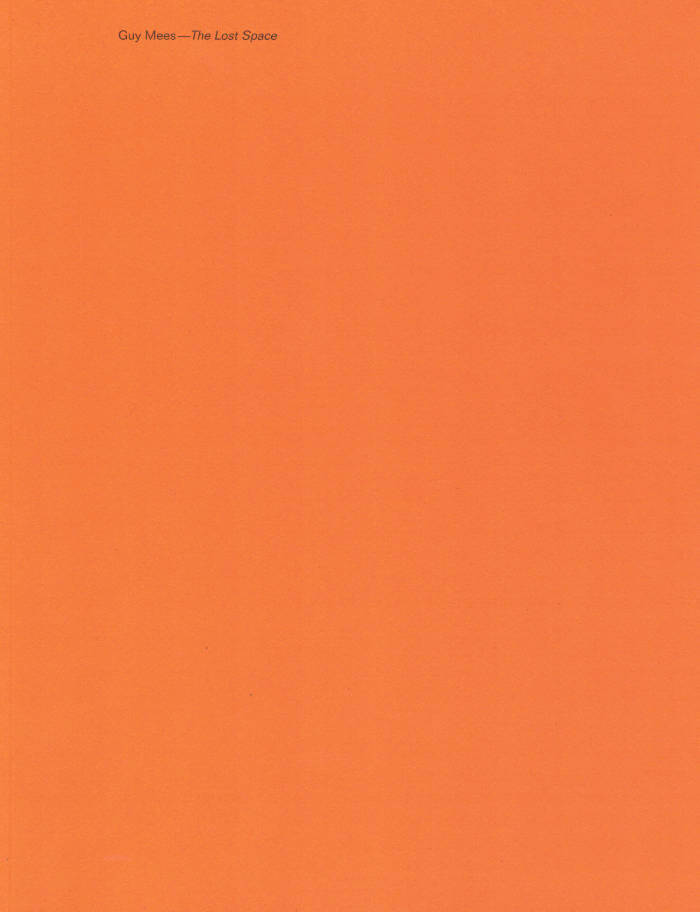
The Lost Space
Publication devoted to the only statement the Belgian artist has ever published about his own work.
Those familiar with Guy Mees know that he used the enigmatic title Lost Space to describe two major bodies of work, distinct in origin and form, and separated by a gap of more than twenty years: the geometric objects and panels covered in lace created in the 1960s, and the works he started producing in the 1980s featuring colour paper cutouts pinned to walls. This publication is dedicated to a lesser-known chapter in this story: the writing process of a short text entitled, likewise,The Lost Space. An ambiguous manifesto for Mees' work, the text went through a number of revisions, with Mees contributing suggestions, but never authoring it himself. This book reproduces eight extant versions of the text for the first time, in facsimile and typographic transcription as Richard Hamilton did with the Large Glass notes of Marcel Duchamp.
Published on the occasion of Guy Mees at MU.ZEE, Ostende, in 2019.
Limited edition of 350 copies.
Guy Mees (1935-2003) is a Belgian artist whose oeuvre encompasses photographs, videos, sculptures, and fragile works on paper that combine formal rigor with delicacy and a conceptual approach. A leading figure of the Belgian avant-garde, Mees left behind an outstanding body of work that transgresses geometric abstraction, Minimalism, Conceptualism, and applied arts.
Edited by Lilou Vidal.
Graphic design: Joris Kritis.

Requíem for Mirrors and Tigers
Naufus Ramírez-Figueroa: Requiem for Mirrors and Tigers catalogues the trajectory of a cycle of performances of the same name, through which the artist Naufus Ramírez-Figueroa attempted to exhaust his interest in the Guatemalan Civil War as a recurring subject of his work. Designed by Studio Manuel Raeder and published by If I Can’t Dance with Bom Dia Books, the publication documents the six performances in the cycle via foldout colour posters of each work, and an essay by Frédérique Bergholtz and Susan Gibb which offers descriptions of each performance alongside a reflection on the cycle as a whole.

Telephone
"There are phone lines to the living and others for calling the dead. TELEPHONE by Ariana Reines is a network for riveting acts of speech, and silence, and listening. I saw the play and never forgot it. The audience was lit like a switchboard by its storms of courage and mystical love."—Rachel Kushner
"TELEPHONE is an uncanny parcel of theater in which the wishes of humans to speak with the dead meet the limits or the aspirations of technology. A woman wrapped in language is deemed insane and the lonely pastness of our present walks around calling for itself. TELEPHONE is a whild and visionary piece of art that announced to me a poet who is always tearing the future open like a trapped animal—their eyes reflect us. Don't look! We mus. Bless you and love you Ariana for this great work."—Eileen Myles
"I have been WAITING FOR THIS BOOK! When I saw it in the theater every word motion fell into magic stride utterly taxing the soul with its accuracy and mystery. The next night I was at the box office with a different friend and needed to return to my job is the only thing that kept me from the theater a third night. Examine for yourself the bewitching and sometimes misshapen communicative powers of life with the poetry goddess of the stage, Ariana Reines!— CA Conrad
"TELEPHONE, the inspired and utterly original new tone poem of a play, probes feelings with the sensitivity and detachment of a heart surgeon."—Ben Brantley, The New York Times

Pas de deux, Le cinéma de Anne-Marie Miéville
Developed on the occasion of a retrospective program of the work of Anne-Marie Miéville. Courtisane, CINEMATEK and Sabzian have collected a series of writings and interviews in a small-edition bilingual publication (French/English).
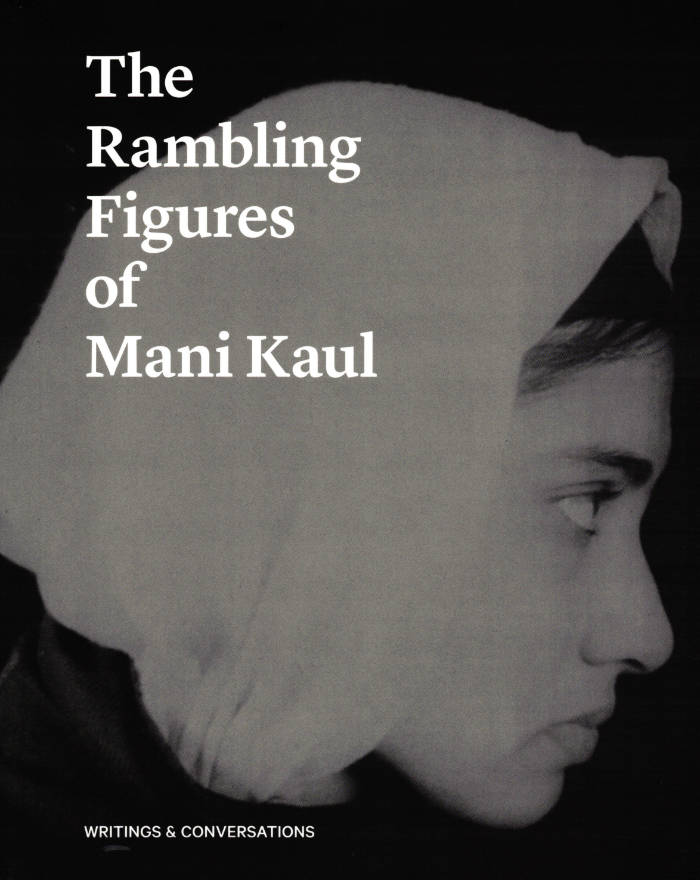
The Rambling Figures of Mani Kaul
Arindam Sen, Stoffel Debuysere
Published on the occasion of the program Soft Notes on A Sharp Scale — The Rambling Figures of Mani Kaul, produced as part of the Courtisane festival 2018, as well as the associated Mani Kaul programme organized by the Essay Film Festival 2018, in collaboration with the Otolith Group.
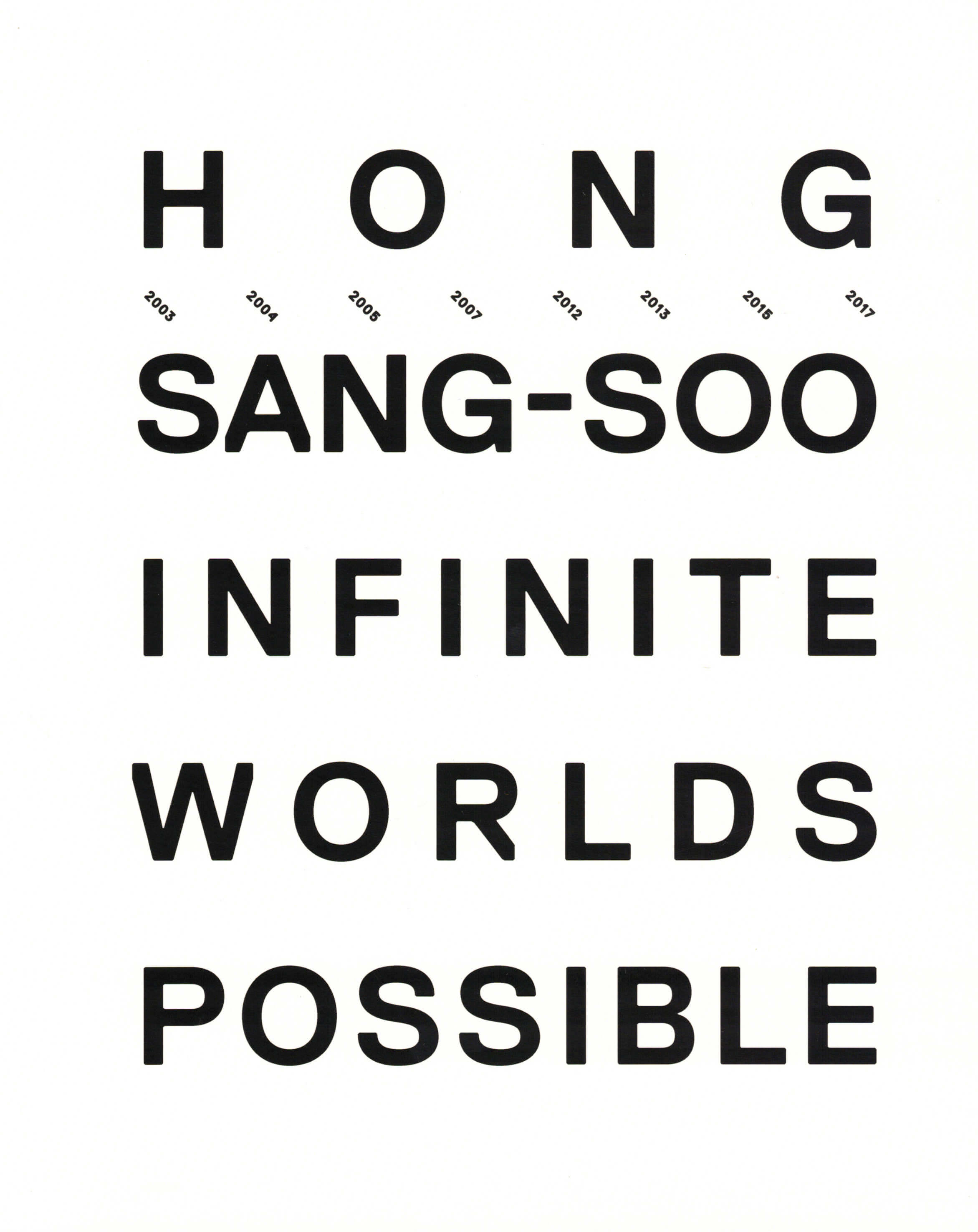
Hong Sang-Soo, Infinite Worlds Possible
Gerard-Jan Claes, Stoffel Debuysere
Developed on the occasion of a Hong Sang-soo retrospective at CINEMATEK in 2018. Infinite Worlds Possible is compiled, edited and published by Courtisane, CINEMATEK and Sabzian. It aims to trace the development of Hong’s remarkable body of work through a collection of essays and interviews.

How to Mend: Motherhood and Its Ghosts
In How to Mend: On Motherhood and its Ghosts, Kayfa ta’s 4th monograph, Iman Mersal navigates a long and winding road, from the only surviving picture of the author has with her mother, to a deep search through what memory, photography, dreams and writing, a search of what is lost between the mainstream and more personal representations of motherhood and its struggles. How to mend the gap between the representation and the real, the photograph and its subject, the self and the other, the mother and her child.
Iman Mersal is an Egyptian poet and associate professor of Arabic Literature and Middle Eastern Studies in the University of Alberta, Canada.
Text: Iman Mersal
Editors: Maha Maamoun and Ala Younis
Translated from Arabic by Robin Moger
Co-publishers: Kayfa ta and Sternberg Press
Design: Julie Peeters
Size: 9.6 x 14.8 cm
Pages: 168 pages, Soft cover

How to spell the fight
James R. Murphy, a math teacher in La Guardia, New York, regarded mathematics as the most powerful and manipulable abstract language available to humans. To acquaint students who don’t “like” math with abstract and systematical thinking, he put a piece of string in their hands and taught them to make string figures.
How to spell the fight follows a thread that has been running through our fingers from centuries past till the present day, morphing from the tangible string figures that join our hands in childhood to the more elusive computational algorithms that engage our fingers today. Following this line of inquiry through various twists and turns, a conversation about collective agency emerges with the aim of rethinking current paradigms of cognition, education, and power.
Natascha Sadr Haghighian is an artist living in Berlin. Her research-based practice encompasses a variety of forms and formats, among them video, performance, installations, text, and sound. She tries to learn how to make string figures.
Text: Natascha Sadr Haghighian
Commissioning editors: Maha Maamoun and Ala Younis
Copyeditor: Ryan Inouye
Co-publishers: Kayfa ta, Sternberg Press, and Tanmia Bookstores
Design template: Julie Peeters
Size: 9.6 x 14.8 cm
Pages: 80 pages, Soft cover
Printed in Cairo.